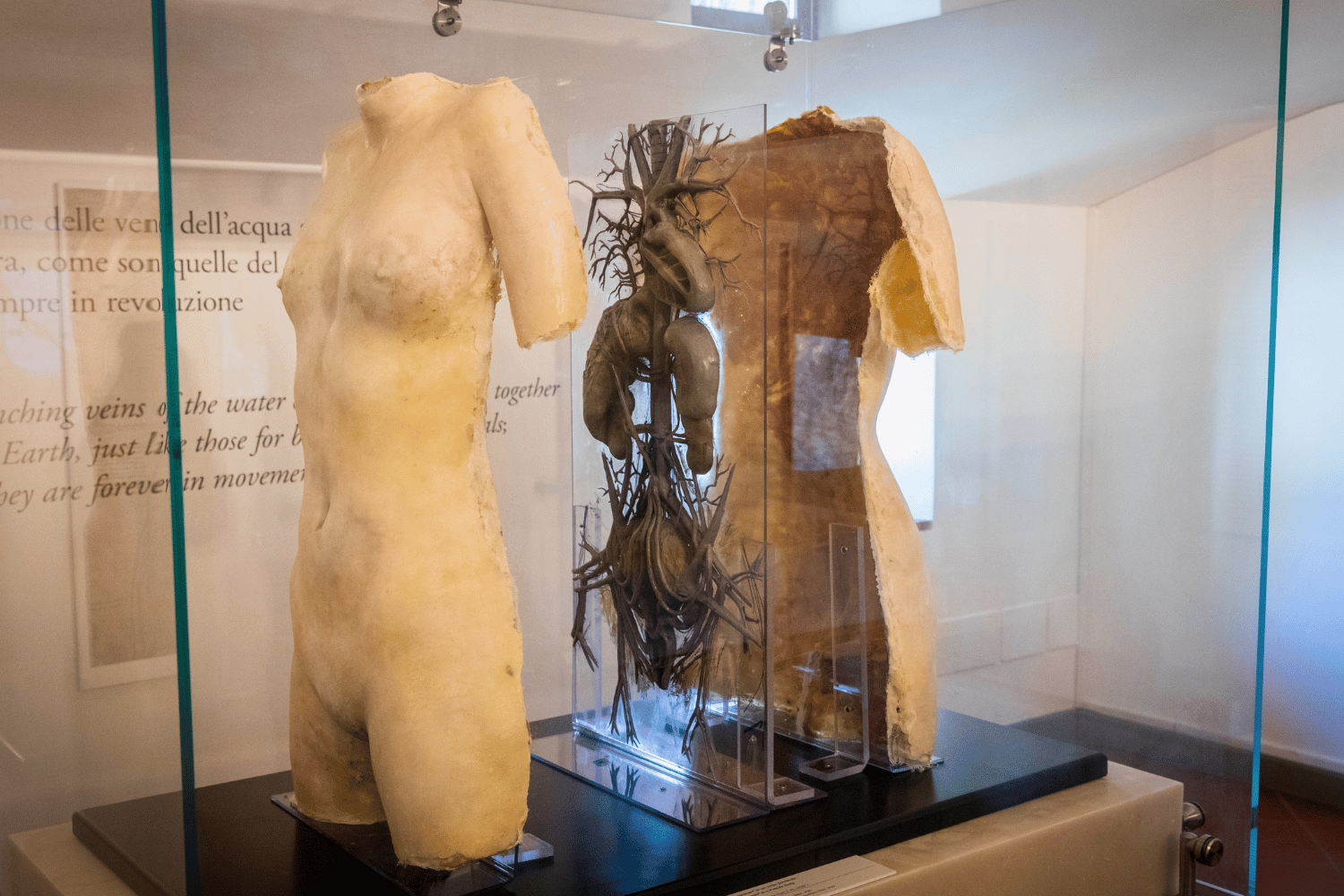Leonardo approached the study of anatomy for the purpose of being able to better portray the human body. Quite soon, however, his curiosity and his spirit of observation led him to investigating the inside of what he himself referred to as the marvelous machine of the body.
It was in Florence, in the early 1500s, that the artist dissected various bodies at the hospital of Santa Maria Nuova, advancing his own hypotheses, proceeding by comparison and formulating theories connecting the form and function of the various organs.
This sculpture in ceroplastics was made by creating a bas-relief model on a sheet of plexiglass, representing the internal organs of a female body. We can make out the uterus, kidneys, liver, spleen, and heart, with its blood vessels, organized in an ensemble view that is defined officially in anatomy as the situs viscerum (the site of the viscera).
The work is completed by two outer shells representing the front and back of the body, in accordance with a special drafting technique allowing transparency, often utilized by Leonardo, in which the outline of the body allows us to view the internal organization of the viscera.
Technical informations
Type of exhibit
Model
Collection
Material
Wax sculpture
Measures
Height: 67.5 cm; Width: 35 cm.
Storage location
Relationship with the original work
Source: Leonardo da Vinci, Windsor Collection, f. RL 12281
Location
Museo Leonardiano, Palazzina Uzielli, second floor
Related exhibits
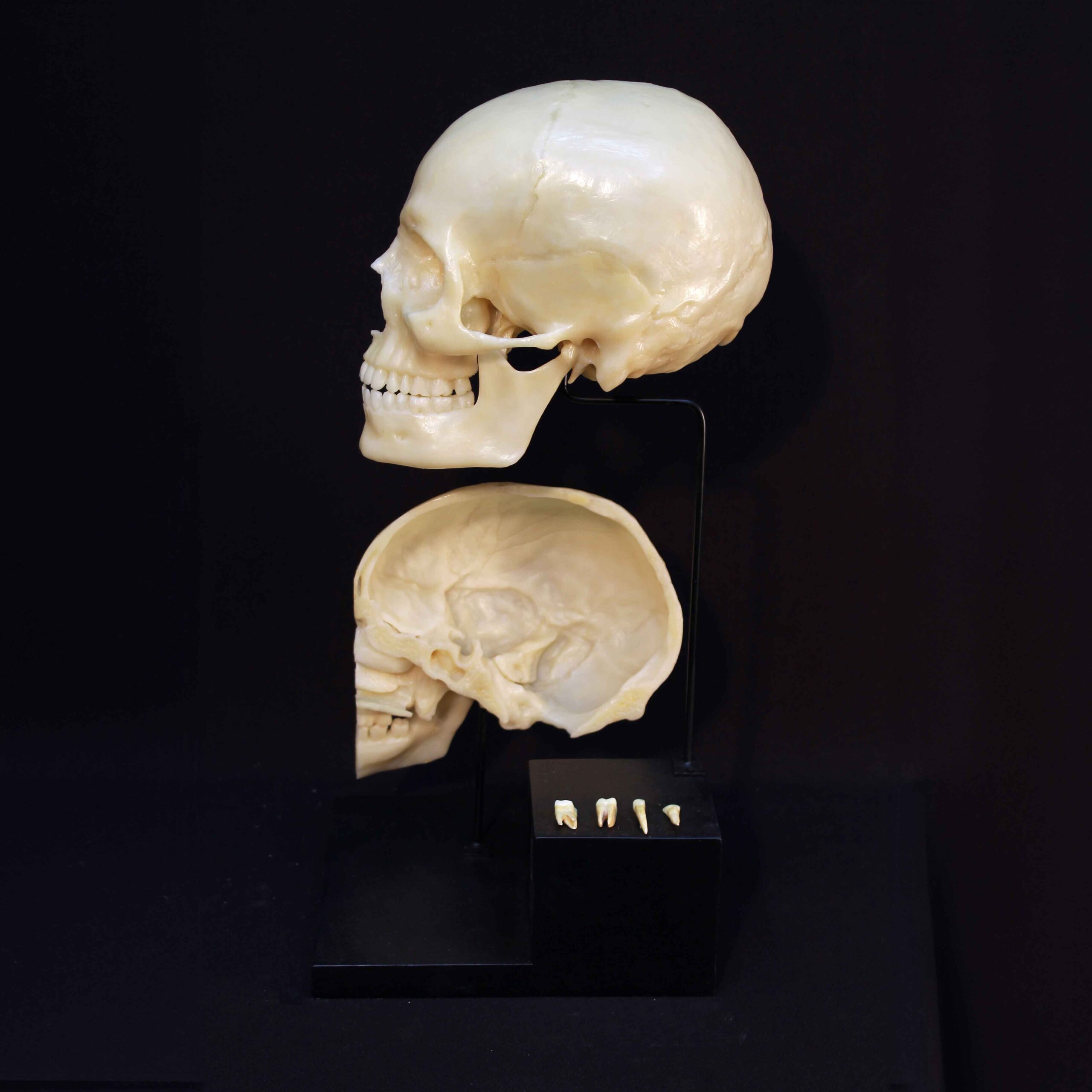
Studies of the cranium
Situs viscerum in a female body
2016
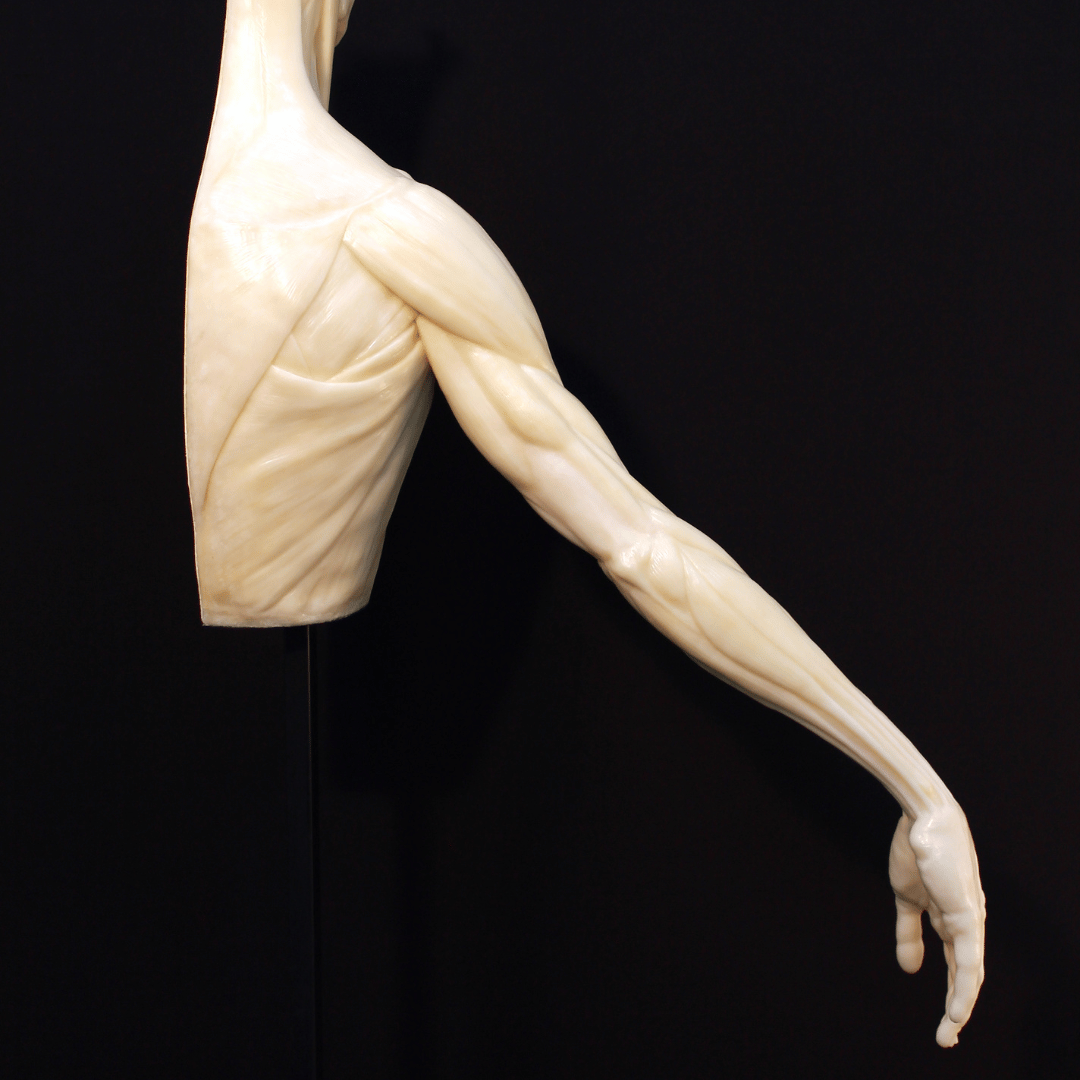
Studies of the upper limb
Situs viscerum in a female body
2016

Lower limbs in kneeling position
Situs viscerum in a female body
2016
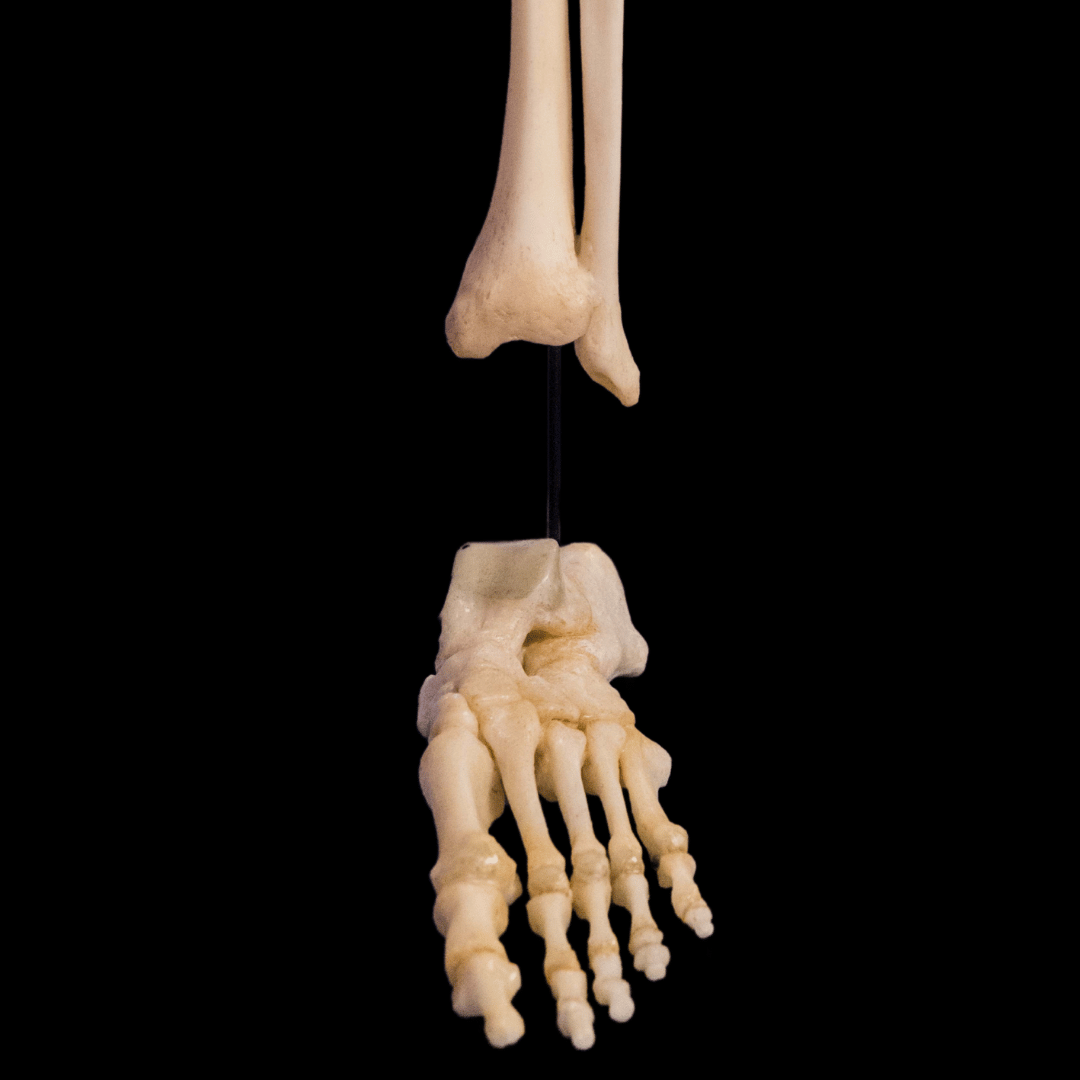
Studies of the joints of the foot
Situs viscerum in a female body
2016
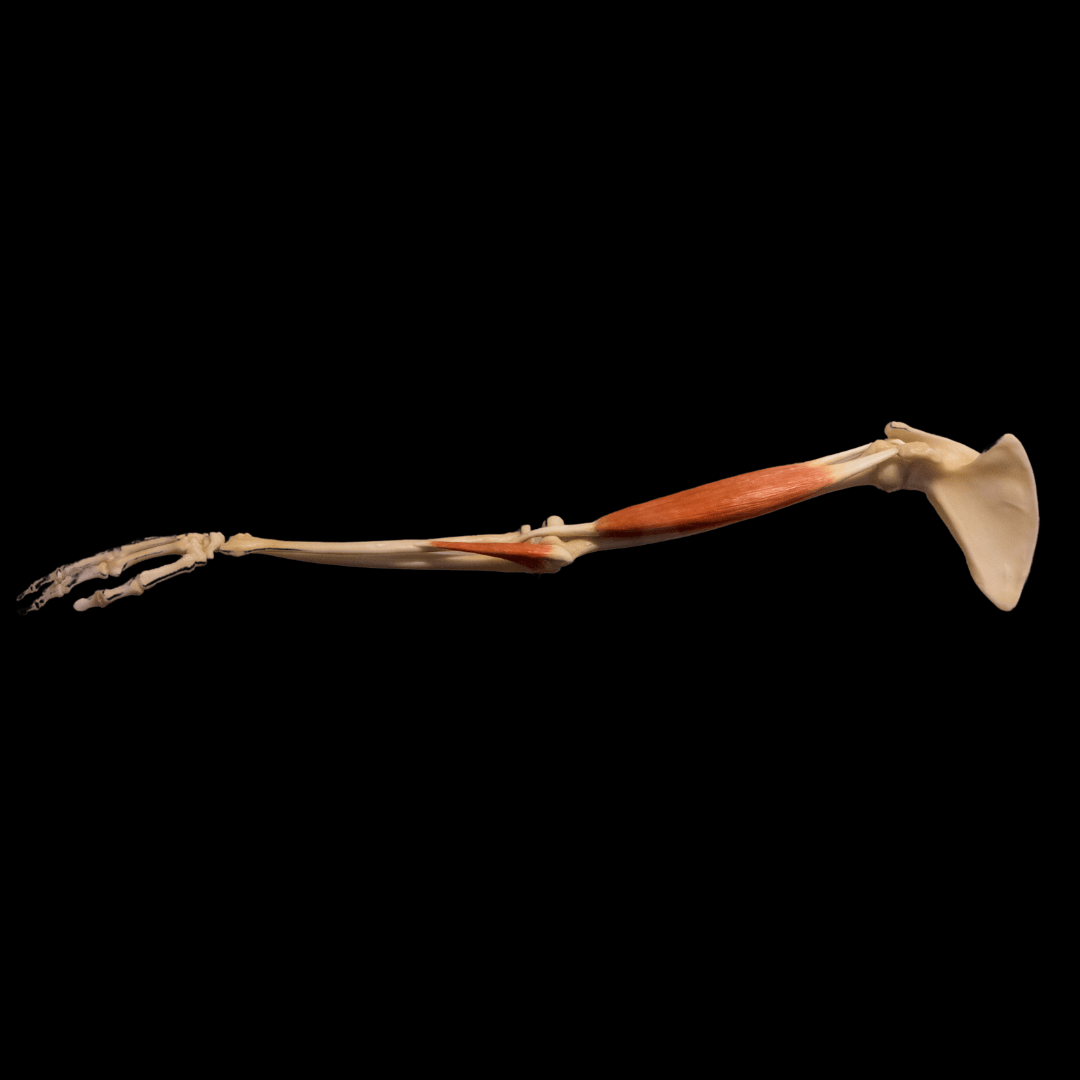
Studies of the upper limb in pronation-supination
Situs viscerum in a female body
2016
Last update: 24 June 2025, 09:48
